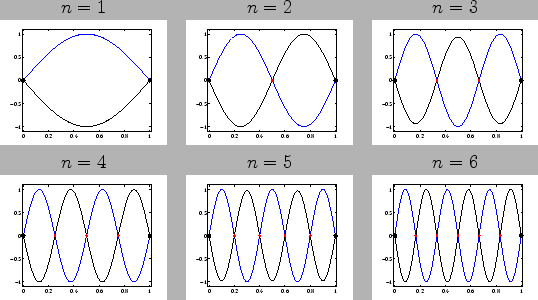Next: Wave Equation in 2D Up: Examples Previous: Example 2.
Assume that the initial position and velocity are
Other parameters are: Usually a vibrating string produces a sound whose frequency is constant. Therefore, since frequency characterizes the pitch, the sound produced is a constant note. Vibrating strings are the basis of any string instrument like guitar or cello. If the speed of propagation
If the length of the string is

Solutions of the equation in question are given in form of standing waves. The standing wave is a wave that remains in a constant position. This phenomenon can occur because the medium is moving in the opposite direction to the wave, or it can arise in a stationary medium as a result of interference between two waves traveling in opposite directions (see Fig. (2.1.3))
 |
Gurevich_Svetlana 2008-11-12